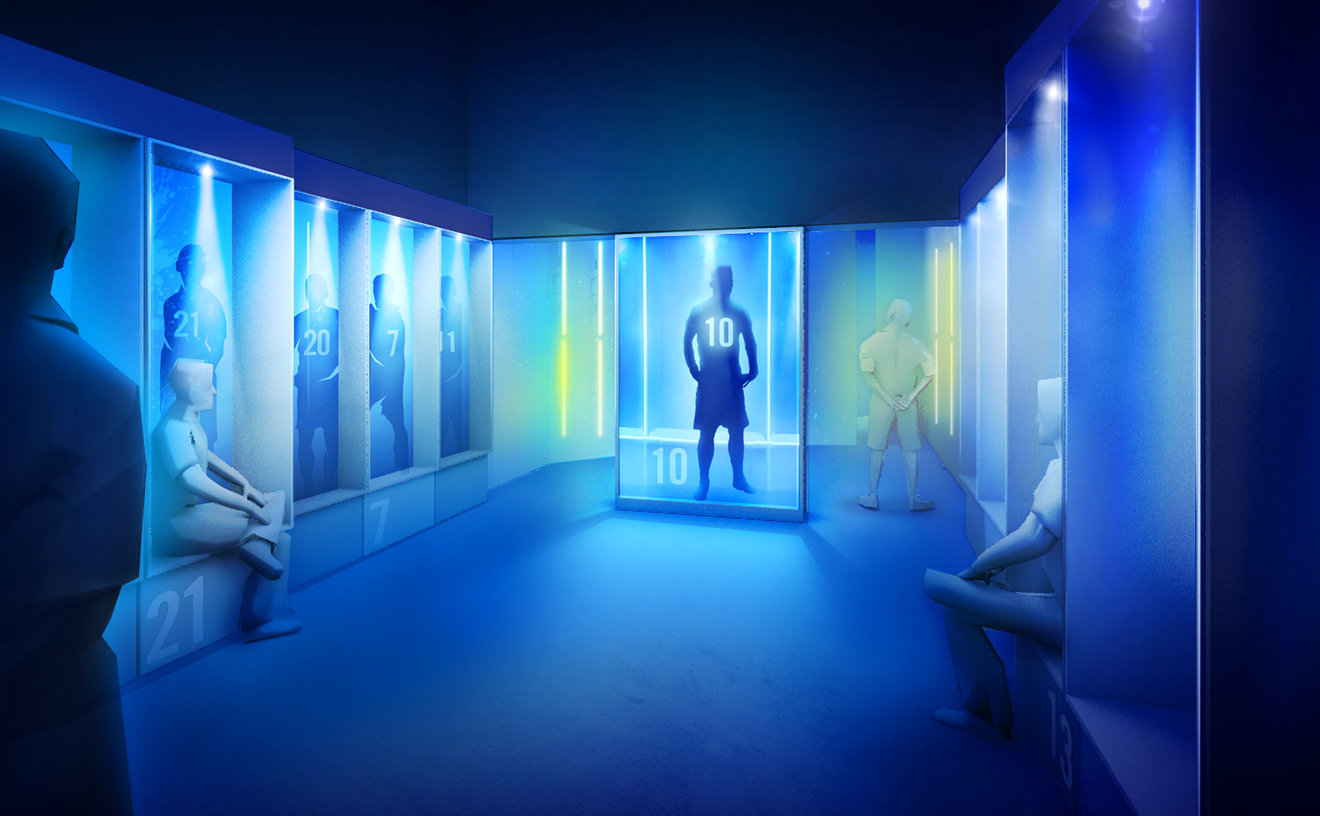Right in the middle of the sidewalk behind the Miami Art Museum sits a 15,000-pound block of granite. Afternoon shoppers and downtown workers rushing to lunch stop dead in their tracks, staring at the tombstone-esque block inscribed on both sides with the word Centrust.
For anyone who survived the '80s in Miami, the word conjures a rich memory of financial malfeasance. The stone once stood in front of the 47-story Miami Tower, Centrust's home until the bank imploded amid the national savings-and-loan scandal.
Now, after artist George Sánchez-Calderón rescued the block from a Wynwood junkyard, the piece has become a readymade sculpture, a powerful ode to past financial crimes and a stark reminder of the more recent Wall Street crisis.
The work is part of "New Work Miami 2013," a 305-centric exhibit at MAM reminding Miami that, as Art Basel brings an embarrassment of international talent to Dade, many exciting creatives are locals.
Associate curators Rene Morales and Diana Nawi put the exhibit together not only to showcase local artists but also to explore the city's history and its psychological peculiarities.
"We wanted to pay tribute to the community of artists who are making dynamic contributions to the Miami art scene and portray the unique qualities of our city at the same time," Nawi says.
To that end, Morales and Nawi invited Consuelo Castañeda and Emmett Moore, two of the 11 artists featured at MAM, to design an immersive environment inside the museum's plaza-level gallery. The pair responded by building vibrant platforms for the other artists' works: soaring Palladian archways, walls covered in green plastic ivy and painted the pastel hues typical of SoBe's art deco hotels, and a sprawling paved stone floor.
It's a striking backdrop for an exhibit that starts with a bicycle rack. In fact, it's the same rack that once stood in front of the main branch of the Miami-Dade Public Library in the Cultural Plaza right across from MAM.
For his Public Sculpture (2012), Tom Scicluna hijacked the rack and relocated it inside the museum's lobby. The artist forces people who might not have planned to enter the museum to interact with other patrons and staff in an unexpected social dialogue.
"A sign was placed where the bike rack was originally located letting cyclists know they could park inside the museum instead," Nawi says. "The sculpture constantly changes on a daily basis in a very spontaneous way, and people are invited to tour the exhibit for free after they park their bikes."
Across from Scicluna's subversive work is the most unusual piece on tap. Moore's Antediluvian (2012) is a stuffed Moluccan cockatoo whose feathers appear moth-eaten. Perched on an ornamental wrought-iron rail next to the museum's public rest rooms, the bird brings to mind Miami's flocks of wild parrots that squawk angrily from treetops.
Inside that main gallery space, a sweeping installation by Castañeda rises floor to ceiling against a corner wall. The Cuban-born artist's New Work Miami 2013 Resource Center features lofty, custom-made wallpaper depicting the Tower of Babel as painted by 16th-century Flemish master Pieter Bruegel the Elder, which Castañeda has turned upside down. Beneath the impressive image — mirroring Miami's multicultural cacophony and dizzying information excess — Castañeda created a modular bench and shelf area where visitors are invited to sit and interact with her work.
She had the museum gather suggestions for research materials from participant artists and later compiled a digital archive of those works. Visitors can access the results on laptop computers in the interactive piece.
"She was inspired by the concept of the Internet browser and how people access search engines for information," Nawi explains. "Part of her goal was taking in information from the participating artists and redistributing text and images that visitors can look at on a website she created."
Just next to that display, Gideon Barnett's arresting photographic constructions tweak the fleeting nature of time and recorded history. Barnett, who moved to Miami a year ago from Tennessee, creates large-scale pigmented inkjet prints that evoke historic artwork. He snaps pictures in local shopping malls, parks, crowded streets, and social events and then uses that raw material as a building block for his fusions.
For example, his Identity Festival Attendees at Biscayne Boulevard and NE 2nd Street, 4:45:32 PM to 4:45:51 PM, 4 August 2012 (2012) depicts a street scene of a young crowd on its way to an outdoor concert. The artist based the composition on a 19th-century painting by Ilya Repin portraying a religious procession, but in Barnett's imagining, his subjects are hellbent on hedonistic worship rather than a pilgrimage of faith.
Sinisa Kukec's nearby sculpture, That which makes you stronger... will most likely kill us (2012), features a pair of epoxy-slathered chairs that defy gravity as they precariously lean against each other as if locked in an intimate embrace. The piece — whose chairs rest atop a section of paver bricks in front of the towering plastic ivy display wall in the center of the gallery — brings to mind a pair of lovers slow-dancing to a plaintive bolero at a New Year's Eve house party in the Kendall suburbs.
Isolated near the rear of the exhibit, Bhakti Baxter's Untitled (Anthropomorphic Artifacts) (2012) engulfs an entire wall. Arranged in a traditional modernist grid, the sweeping work comprises 100 paintings depicting "primitive" figurines and what appear to be talismans or fetishes culled from the pages of art history and myth.
A white leather couch situated across from Baxter's mammoth display invites viewers to sit and meditate how the artist's figures subliminally convey notions of shifting belief systems through the ages and the lost cultures they represent.
MAM's swan song before relocating to its new building on Biscayne Bay, this exhibit not only delivers pride of place to Miami's diversity of talent but, perhaps most important, also does so during a frenzied month when far too many local artists fade into the background.










